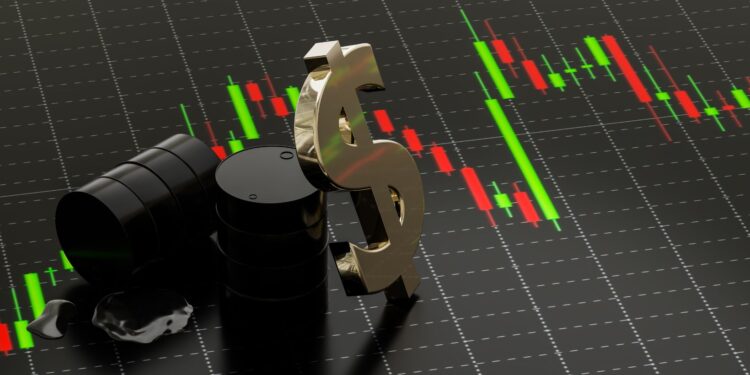The world’s economy relies heavily on oil, making it one of the most traded commodities globally. However, the volatile nature of oil markets has raised concerns about the need for boundaries and limits in oil trading. In this article, we will delve deep into the intricacies of oil trading, exploring its fundamentals, market volatility, regulatory oversight, and the challenges of setting limits in this critical industry.
Understanding Oil Trading
Explaining the Basics of Oil Trading
Oil trading involves the buying and selling of crude oil and its derivatives on various global markets. It is driven by supply and demand dynamics, geopolitical events, and economic factors. Traders can participate in oil trading through futures contracts, options, and physical transactions.
Key Players in the Oil Trading Industry
The oil trading ecosystem comprises several key players, including producers, refiners, traders, and consumers. Major oil trading hubs such as New York, London, and Singapore serve as centers for trading activities.
The Importance of Oil as a Commodity
Oil is the lifeblood of the modern world, used not only for energy but also in various industries, including transportation, petrochemicals, and manufacturing. As such, oil prices can significantly impact global economic stability.
Volatility in Oil Markets
Historical Examples of Oil Market Volatility
Oil markets have witnessed extreme price volatility throughout history. Examples include the 1970s oil crisis, the Gulf War, and the 2020 oil price crash. These events highlight the need for mechanisms to manage and mitigate volatility.
Factors Contributing to Price Fluctuations
Several factors contribute to oil price fluctuations, including changes in production, geopolitical tensions, currency exchange rates, and global economic conditions. Understanding these factors is crucial for managing risk in oil trading.
The Impact of Geopolitical Events on Oil Trading
Geopolitical events, such as conflicts in oil-producing regions and sanctions on oil-exporting countries, can disrupt oil supplies and lead to price spikes. Traders must navigate these geopolitical risks when participating in oil markets.
Market Regulation and Oversight
Government Bodies and Organizations Overseeing Oil Trading
Oil trading is subject to oversight by various government bodies and international organizations. Regulatory agencies, such as the U.S. Commodity Futures Trading Commission (CFTC) and the International Energy Agency (IEA), play pivotal roles in maintaining market integrity.
The Role of Regulations in Maintaining Market Stability
Regulations aim to ensure fair and transparent trading practices, prevent market manipulation, and protect market participants. Position limits, reporting requirements, and surveillance mechanisms are common regulatory tools used in oil trading.
Case Studies of Successful Regulation Implementation
Examining successful cases of regulation implementation, such as the CFTC’s efforts to curb excessive speculation, can provide valuable insights into how regulatory measures can stabilize oil markets.
Speculation vs. Investment
Defining Speculation and Investment in Oil Trading
Speculation involves trading oil contracts with the primary goal of profiting from price movements. In contrast, investment in oil trading typically involves a longer-term outlook, focusing on factors like supply and demand fundamentals.
The Debate Over Speculative Trading and Its Consequences
Excessive speculative trading has been blamed for exacerbating oil price volatility. Critics argue that speculators amplify price swings, while proponents contend that they provide liquidity to the market.
Strategies for Distinguishing Between Speculation and Investment

Regulators and market participants employ various strategies to distinguish between speculative and investment activities, including analyzing trading patterns and enforcing position limits.
Setting Limits in Oil Trading
The Concept of Position Limits in Oil Trading
Position limits restrict the maximum number of contracts or barrels of oil that a trader or entity can hold. They are intended to prevent market manipulation and concentration of power.
The Role of Position Limits in Preventing Market Manipulation
Position limits act as a safeguard against large traders exerting undue influence on oil prices. They promote fair competition and discourage market manipulation.
Challenges in Implementing Effective Position Limits
Setting and enforcing position limits can be challenging, as global oil markets are complex and interconnected. Coordinated efforts among regulators and market participants are necessary for effective implementation.
The Future of Oil Trading
Technological Advancements in Oil Trading
Advancements in technology, such as algorithmic trading and blockchain, are reshaping the landscape of oil trading. These innovations offer increased efficiency and transparency.
Sustainability and the Transition to Renewable Energy Sources
The growing focus on sustainability and climate change is driving efforts to transition away from fossil fuels. This shift will have profound implications for the oil trading industry.
Potential Shifts in the Global Oil Trading Landscape
Changing geopolitical dynamics, emerging markets, and evolving consumer preferences will likely lead to shifts in the global oil trading landscape. Adapting to these changes will be crucial for market participants.
Conclusion
In conclusion, it is important to recognize the significant role that oil trading plays in the global economy. One notable player in this industry is http://oilprofit.app an advanced oil trading platform that has seamlessly integrated itself into the market. This platform equips traders with cutting-edge tools and invaluable insights to navigate the intricate world of oil trading.

The inherent volatility of oil markets underscores the need for setting clear boundaries and limits. Regulatory oversight, the implementation of effective position limits, and a deep understanding of market dynamics are all vital components for preserving stability within this critical sector.
Looking ahead, as technology continues to advance and concerns regarding sustainability gain momentum, the landscape of oil trading will undoubtedly undergo changes. This transformation will bring forth both challenges and opportunities for market participants. To succeed in this ever-evolving realm of oil trading, individuals and organizations must remain well-informed and adaptable to the shifting tides of the industry.
















